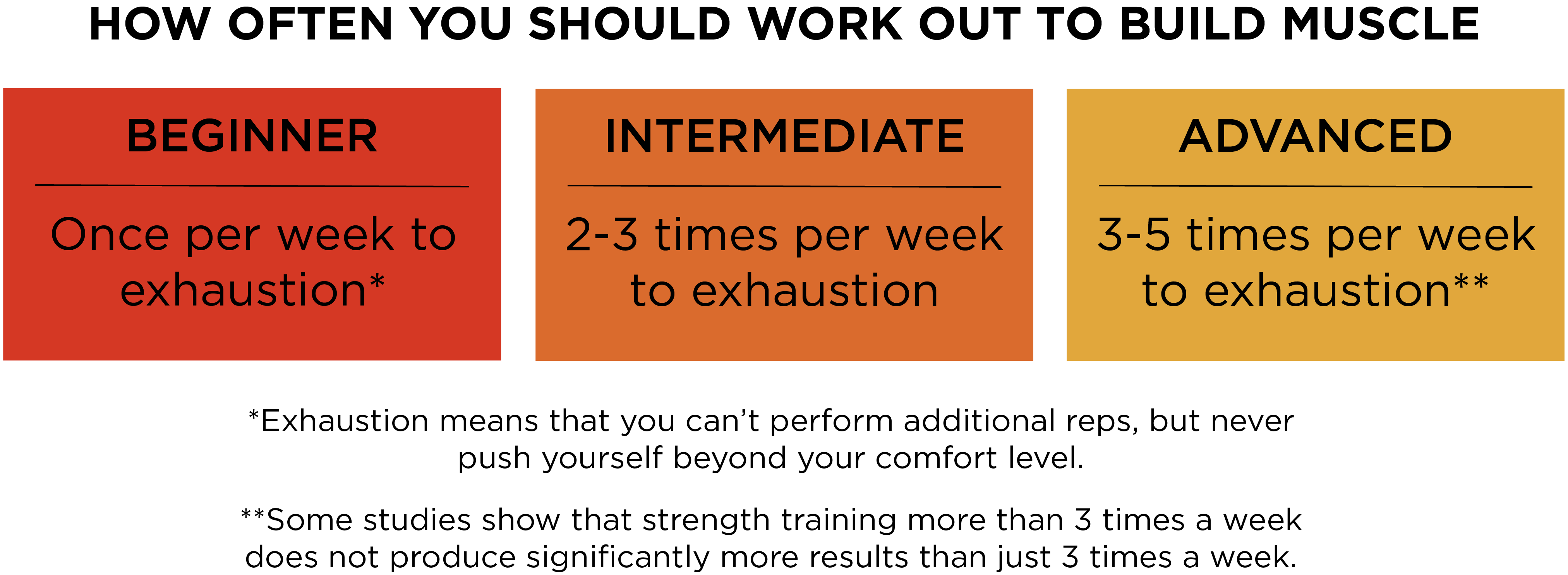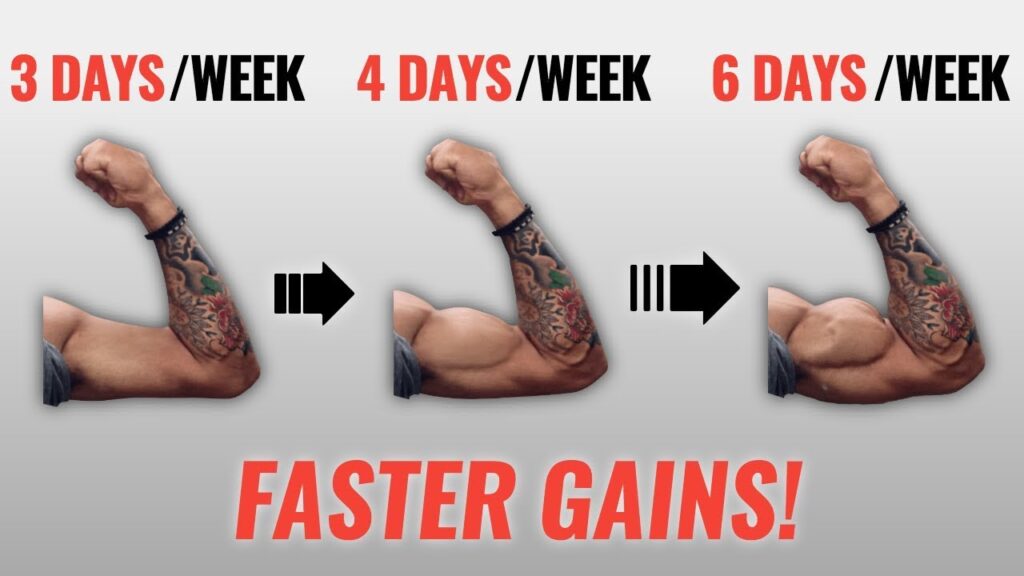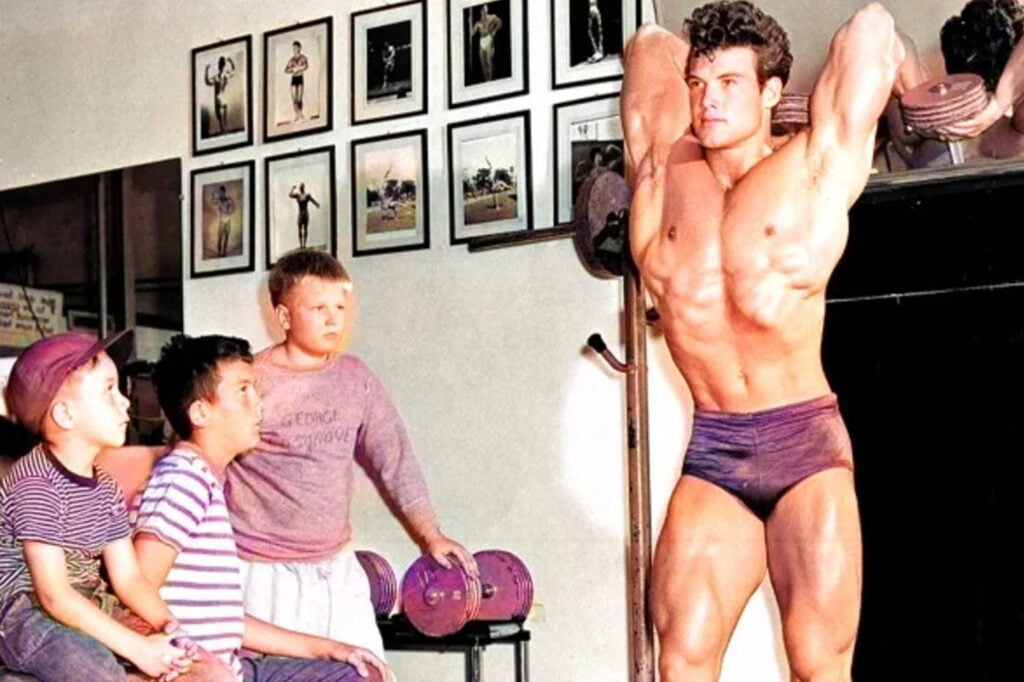For muscle gain, workout 3-5 times per week. Balance strength training and rest for optimal growth and recovery.
Achieving muscle gain requires consistency and a well-structured workout plan. Training 3-5 times weekly allows sufficient time for muscle recovery and growth. Focus on compound exercises like squats, deadlifts, and bench presses, which engage multiple muscle groups. Incorporate a mix of heavy lifting and moderate weights with higher repetitions.
Adequate rest between sessions is crucial to prevent overtraining and injury. Nutrition also plays a significant role; consume a balanced diet rich in protein, carbohydrates, and healthy fats. Stay hydrated and get enough sleep to support muscle repair. Track your progress and adjust your routine as needed to keep challenging your muscles.

Credit: www.medicalnewstoday.com
Optimal Workout Frequency
A good workout plan needs a balanced approach. Training muscles 3 to 4 times a week is ideal. Too much exercise can hurt your progress. Rest days are just as important as workout days. This balance helps muscles grow stronger.
Muscles need time to recover after workouts. Resting for at least 48 hours between workouts is best. Working out daily can lead to injuries. Rest days help your body repair and grow muscles. Sleep and good nutrition are also crucial for muscle gain.

Credit: www.youtube.com
Types Of Exercises
Working out for muscle gain typically requires 3-5 sessions per week. Consistency and progressive overload are key factors in achieving results.
Compound Movements
Compound movements engage multiple muscle groups. These exercises include squats, deadlifts, and bench presses. They are efficient and effective for muscle gain. Squats work on your legs and core. Deadlifts target your back, legs, and grip strength. Bench presses focus on your chest, shoulders, and triceps. Performing compound movements helps you build strength faster. These exercises also improve coordination.
Isolation Exercises
Isolation exercises target a single muscle group. Examples include bicep curls, tricep extensions, and leg curls. They are great for focusing on specific muscles. Bicep curls help build arm strength. Tricep extensions focus on the back of the arms. Leg curls work on the hamstrings. These exercises are perfect for muscle imbalances. Isolation exercises complement compound movements.
Training Volume
For muscle gain, aim for 8-12 reps per set. Choose weights that challenge you. Perform 3-5 sets for each exercise. More sets can lead to better gains. Rest for 1-2 minutes between sets. This helps muscles recover. Mix different exercises for balanced growth.
Progressive overload means gradually increasing the workout load. Add more weight over time. Increase reps or sets as you get stronger. Challenge your muscles to grow. Keep track of your progress. Use a workout journal. This helps you stay on track.
Rest And Recovery
Sleep helps muscles grow. During sleep, the body repairs muscle tissues. Aim for 7-9 hours of sleep each night. Quality sleep boosts energy for workouts. Poor sleep slows down muscle growth. Lack of sleep can also lead to injuries. So, make sleep a priority for muscle gain.
Active recovery includes light activities. Walking and stretching are good examples. These activities help blood flow to muscles. Blood flow helps muscle recovery. Yoga can also be a part of active recovery. Light swimming is another great option. These methods prevent muscle stiffness and soreness.
Nutrition And Hydration
Protein is key for muscle growth. Aim for 1.6-2.2 grams per kilogram of body weight. Protein sources include chicken, beef, fish, and beans. Don’t forget dairy products like milk and cheese. Protein shakes can also help meet your goals. Spread protein intake throughout the day. Eat protein with every meal and snack.
Water is vital for muscle growth. Drink at least 8 cups of water a day. More water is needed during intense workouts. Hydrate before, during, and after exercise. Avoid sugary drinks. They can dehydrate you. Carry a water bottle to remind yourself to drink. Listen to your body. Drink when you’re thirsty.

Credit: www.chicagoathleticclubs.com
Consistency And Patience
Consistency is key to building muscle. Work out at least three times a week. Don’t expect quick results. Muscles grow slowly over time. Patience is important.
Keep a workout journal. Write down the exercises, sets, and reps. Track your progress weekly. Adjust your routine if needed. This helps stay motivated. Seeing improvement encourages you to keep going.
Set small, achievable goals. Aim for steady progress. Don’t set goals that are too high. This can lead to disappointment. Celebrate small victories. Each step forward is a win. Stay positive and focused.
Common Mistakes
Overtraining can lead to injuries and burnout. Muscles need time to recover and grow. Working out every day without rest is not effective. It’s important to give muscles at least one rest day per week. This helps in muscle repair and growth.
Skipping warm-up can cause serious injuries. Warm-up prepares your muscles for exercise. It increases blood flow and flexibility. A proper warm-up should last at least 5-10 minutes. Simple activities like jogging or dynamic stretches work well. Always warm-up to avoid strains and sprains.
Expert Recommendations
Personal trainers suggest working out 4 to 5 times a week. This routine helps you build muscle effectively. Always include rest days in your schedule. Rest days help muscles recover and grow. Mix different exercises to target various muscle groups. Focus on both upper and lower body workouts. Each session should last about 45 minutes to an hour. Consistency is key for muscle gain.
Studies show that working out 3 to 4 times a week is optimal. This frequency allows for adequate muscle recovery. Each muscle group needs at least 48 hours to recover. Short, intense workouts can be more effective. High-intensity interval training (HIIT) can boost muscle growth. Avoid long periods of inactivity. Balance workouts with proper nutrition and sleep.
Frequently Asked Questions
How Many Days A Week Should I Workout For Muscle Gain?
You should aim to workout 3-5 days a week for muscle gain. This allows enough time for muscle recovery and growth.
Is It Okay To Workout Every Day For Muscle Gain?
Working out every day is not ideal for muscle gain. Muscles need rest to recover and grow properly.
How Long Should Each Workout Session Be?
Each workout session should last 45-60 minutes. This duration is optimal for muscle growth without overtraining.
Should I Do Cardio When Trying To Gain Muscle?
Yes, but keep cardio sessions short. Limit them to 20-30 minutes to avoid hindering muscle growth.
Conclusion
Consistency is key for muscle gain. Aim for 3-5 workouts per week, depending on your fitness level. Listen to your body and adjust as needed. Balance workouts with adequate rest and nutrition. This approach ensures steady progress and optimal muscle growth.
Stay committed, and results will follow.











